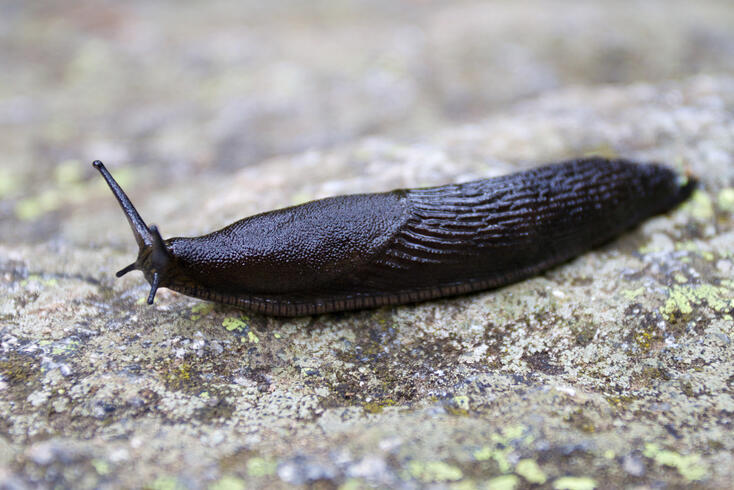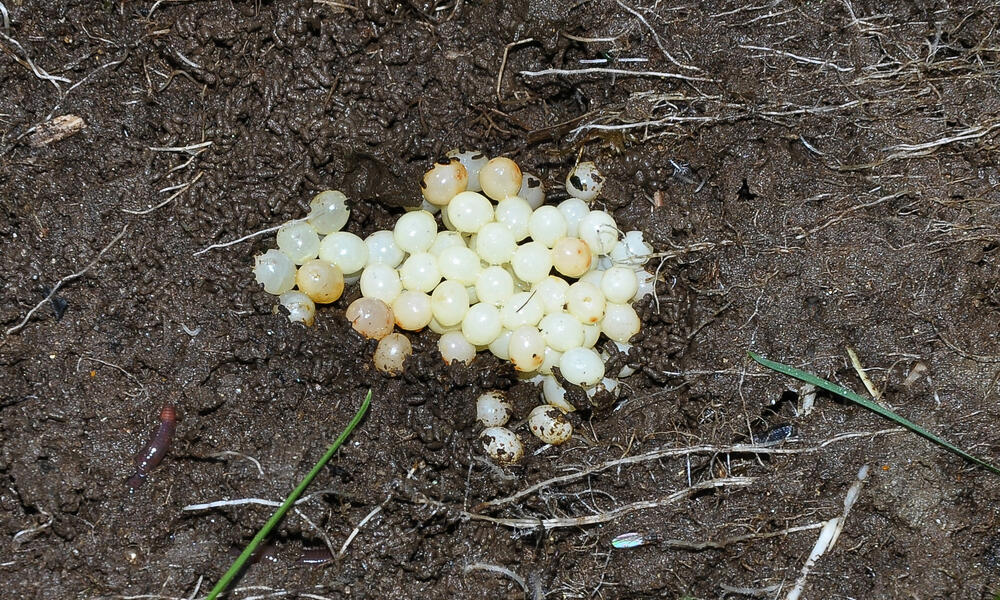From snails salad and vegetables are not safe. Means to deter snails are many. But if you destroy snail eggs already in the fall, you will have fewer problems in the summer. We show you how to find and get rid of the eggs.
Contents
Snail eggs: The most important facts in brief
- Snail eggs are white to yellow and about the size of a pinhead.
- The Spanish way snail lays up to 400 eggs between June and December.
- Dig up snail eggs and let them dry out in the sun.
Slugs are a horror to many gardeners. They eat vegetables and reduce the harvest. Therefore, many resort to countermeasures. The most effective you take in the fall, when hardly any slugs can be seen. This is the time of year when they lay their slug eggs. Destroy them, you greatly reduce the slug problem the next year. Each slug lays up to 400 eggs.
What do slug eggs look like?
Most of the slugs that cause trouble in the garden are slugs, more specifically the Spanish slug. But do you know what their slug eggs look like? We’ll tell you. Slug eggs – especially those of night slugs – are small white to yellowish balls. This makes them stand out very well against the dark ground. A single egg is the size of a pinhead. The eggs are usually laid in groups of about 50.
Where to find slug eggs?
Slugs leave their eggs in different places. Especially popular places are burrows in beds, planters, under loose stones, as well as barrels and edges of paths. The hiding places protect the eggs from possible enemies. It is also cool and dark there – ideal conditions for overwintering. Examine these places regularly in the fall. The animals lay the eggs in these places again and again. But snail eggs also often hide in dead wood, piles of leaves and compost, and grass clippings.
How long does it take for snails to hatch?
In this country, the Spanish slug in particular is widespread. It is one of the most common slugs in Europe. They are hermaphrodites. They have female as well as male sexual organs. During mating in late summer, both partners secrete seed packets. From the end of June the snail lays its eggs. The peak period is in August and September. If the autumn and winter are very mild, this can even happen in December. Warm and humid weather promotes reproduction. The young hatch in late autumn or in February or March of the following year, depending on how the eggs are laid.

What can be done about snail eggs?
To prevent a plague of snails, it is useful to remove and destroy the eggs of snails in the fall. You have different options for this. The best way is to prevent the laying of eggs already. For example, dig up your beds in late fall. Then level them evenly. In this way, the slugs will not find protected burrows. Repeat the procedure in the spring.
If you have to fight slugs in your garden for a long time, do not use mulching. This provides good protection for the animals to lay their eggs. Also be careful when spreading compost. If you discover small white balls there, they are slug eggs.
Tip: If you have bought new potting soil and find small white balls, you do not have to worry. This is depot fertilizer. This is reminiscent of snail eggs, but are much firmer. If you are unsure, simply do a pressure test.
If you have already discovered snail eggs, simply expose the nest. The eggs will dry in the sun. Birds and hedgehogs in the garden will eat the remains afterwards. Other beneficial insects are Roman snails. Their menu includes other snail eggs. The slug species tiger snails also eat the eggs. Bad conditions for the eggs are high temperatures, low humidity and direct sunlight.


